Did you know? |
In 2017 Tektronix introduced the FlexChannel technology for its 5 Series oscilloscopes. Each channel can be used either as one analog or as 8 digital channels. Read more...
Latest Oscilloscope News |
800G Test Solution for Validating Conformance of 112 Gbps Interfaces
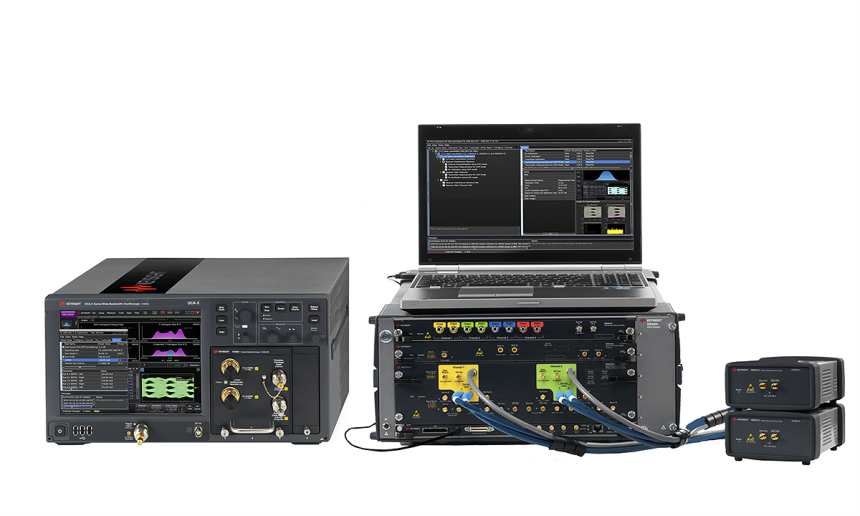 24 March 2022 - Keysight Technologies announced the industry's first compliance test solution for validating 112 gigabit per second (Gbps) serial data center interface to the latest industry standards. The new 112 Gbps conformance test solution leverages Keysight's M8040A 64 GBaud high performance bit error ratio tester (BERT) with a N1060A Digital Communication Analyzer (DCA) for receiver testing and Keysight's Infiniium UXR-Series real-time oscilloscope for transmitter testing.
24 March 2022 - Keysight Technologies announced the industry's first compliance test solution for validating 112 gigabit per second (Gbps) serial data center interface to the latest industry standards. The new 112 Gbps conformance test solution leverages Keysight's M8040A 64 GBaud high performance bit error ratio tester (BERT) with a N1060A Digital Communication Analyzer (DCA) for receiver testing and Keysight's Infiniium UXR-Series real-time oscilloscope for transmitter testing.
Rohde & Schwarz Oscilloscope Days return for 2022
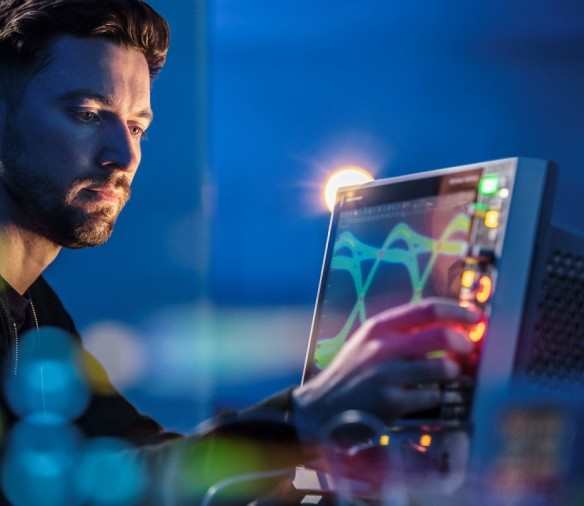 22 March 2022 - Rohde & Schwarz will repeat the Oscilloscope Days in 2022, taking place on April 27 and 28. Building on the success of the previous events, the two-day program consists of webinars presented by technical experts, in a multi-lingual format. Free to attend and delivered live, the webcasts will be streamed in English, German, French, Spanish and Brazilian Portuguese. The sessions include direct interaction with presenters and experts from Rohde & Schwarz and event partners Würth Elektronik and PE Systems.
22 March 2022 - Rohde & Schwarz will repeat the Oscilloscope Days in 2022, taking place on April 27 and 28. Building on the success of the previous events, the two-day program consists of webinars presented by technical experts, in a multi-lingual format. Free to attend and delivered live, the webcasts will be streamed in English, German, French, Spanish and Brazilian Portuguese. The sessions include direct interaction with presenters and experts from Rohde & Schwarz and event partners Würth Elektronik and PE Systems.
PMK opens Office in USA
11 March 2022 - PMK Mess- und Kommunikationstechnik, a German independent manufacturer of electronic test and measurement equipment, opened a subsidiary in USA. Main products of PMK are oscilloscope probes. PMK America Corporation is located in Portland Oregon will provide technical advice for probing challenges and customized probing solutions for customers in the Americas. Many oscilloscope manufacturers outfit their devices with active and passive probes from PMK.
5G Analysis Software for Oscilloscopes
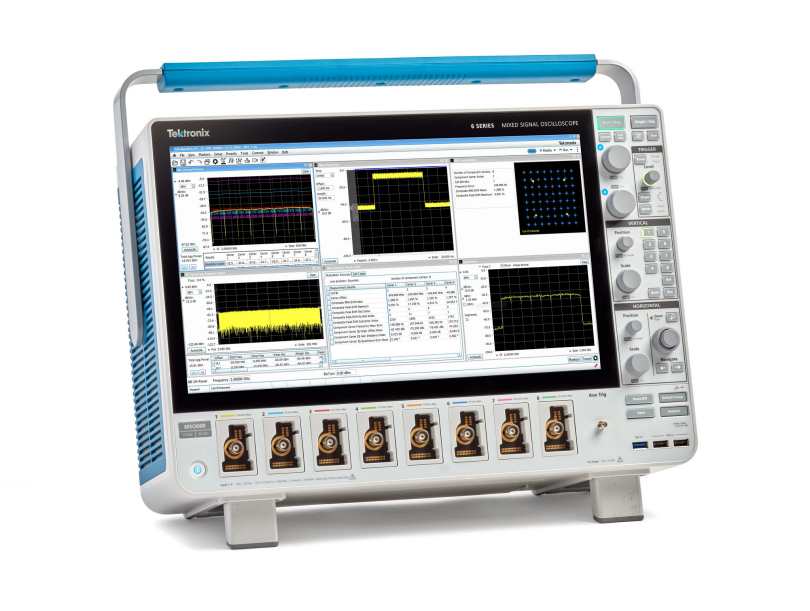 01 March 2022 – Tektronix announced the release of its SignalVu 5G NR analysis software for 6 Series B MSO oscilloscopes. Engineers can now perform critical 5G NR measurements per 3GPP specifications on the oscilloscopes they rely on to bring-up and characterize new electronic designs. The 5G software enables engineers to diagnose complex signal interactions on a single oscilloscope, reducing the need for painstaking correlation between instruments.
01 March 2022 – Tektronix announced the release of its SignalVu 5G NR analysis software for 6 Series B MSO oscilloscopes. Engineers can now perform critical 5G NR measurements per 3GPP specifications on the oscilloscopes they rely on to bring-up and characterize new electronic designs. The 5G software enables engineers to diagnose complex signal interactions on a single oscilloscope, reducing the need for painstaking correlation between instruments.
Industry-First PCI-Express 6.0 Test Solution
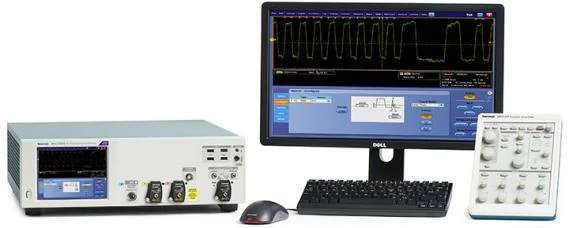 16 February 2022 - Tektronix introduced a PCI Express 6.0 compatible Base transmitter test solution just weeks after the PCI-SIG working group released PCI Express (PCIe) 6.0 Base specifications and validation requirements. PCIe 6.0 is an important and scalable standard for data-intensive markets such as data center, artificial intelligence/machine learning (AI/ML), and high-performance computing.
16 February 2022 - Tektronix introduced a PCI Express 6.0 compatible Base transmitter test solution just weeks after the PCI-SIG working group released PCI Express (PCIe) 6.0 Base specifications and validation requirements. PCIe 6.0 is an important and scalable standard for data-intensive markets such as data center, artificial intelligence/machine learning (AI/ML), and high-performance computing.
Tablet Oscilloscopes with Bandwidths up to 120 MHz
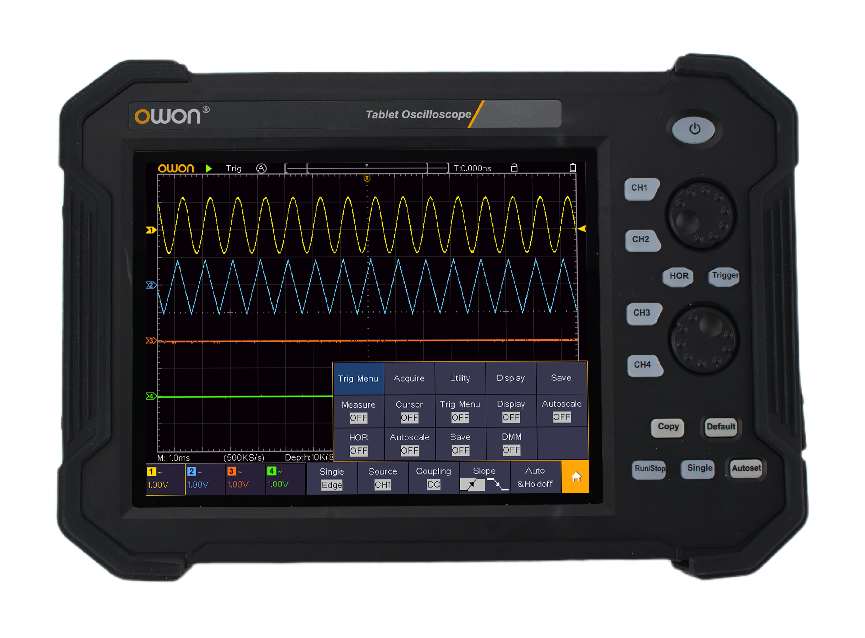 28 January 2022 - Owon introduced the TAO3000 Series 2/4 channel 8/14bit Tablet Oscilloscopes - handy portable scopes that are especially suited for field use. They offer 70, 100, or 120MHz bandwidth and a 1GSa/s signal sampling rate, with a built-in 4 1/2 digit multimeter in the 2-channel models. A huge 40MSa record length allows for deep investigation into glitches and other small signals. An internal built-in 8000mAh high-capacity battery allows for continuous operation of up to 5 hours.
28 January 2022 - Owon introduced the TAO3000 Series 2/4 channel 8/14bit Tablet Oscilloscopes - handy portable scopes that are especially suited for field use. They offer 70, 100, or 120MHz bandwidth and a 1GSa/s signal sampling rate, with a built-in 4 1/2 digit multimeter in the 2-channel models. A huge 40MSa record length allows for deep investigation into glitches and other small signals. An internal built-in 8000mAh high-capacity battery allows for continuous operation of up to 5 hours.
Tektronix enhances existing 5 Series Mixed Signal Oscilloscope
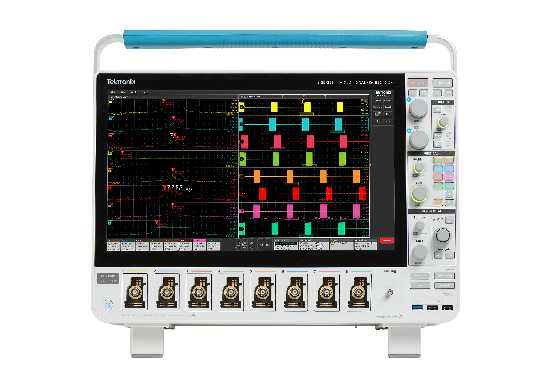 11 January 2022 -- Tektronix launched a new version of its 5 Series mixed-signal oscilloscope (MSO). The new B version includes several updates, such as a new auxiliary trigger input that lets users synchronize the oscilloscope to an external signal without consuming any of the 4, 6, or 8 full-capability input channels. For the optional, built-in arbitrary/function generator, the maximum frequency output increases from 50 MHz to 100 MHz, enabling higher frequency stimulus for measurements such as Bode plots and impedance measurements. These new capabilities are invaluable for making fast, thorough checks of power integrity on power distribution networks.
11 January 2022 -- Tektronix launched a new version of its 5 Series mixed-signal oscilloscope (MSO). The new B version includes several updates, such as a new auxiliary trigger input that lets users synchronize the oscilloscope to an external signal without consuming any of the 4, 6, or 8 full-capability input channels. For the optional, built-in arbitrary/function generator, the maximum frequency output increases from 50 MHz to 100 MHz, enabling higher frequency stimulus for measurements such as Bode plots and impedance measurements. These new capabilities are invaluable for making fast, thorough checks of power integrity on power distribution networks.
Oscilloscope Basics |
A Comparison between Oscilloscopes and Spectrum Analyzers
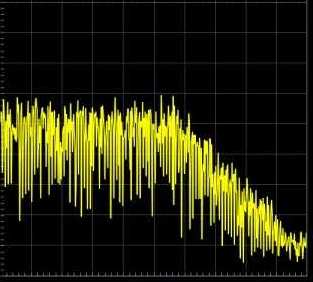 Whether it is for a land survey searching for minerals on Earth, or for a space exploration in search of alien life forms, the analysis of any signal boils down to looking at its time and frequency information. While an oscilloscope displays a signal with respect to time, a spectrum analyzer shows it with respect to frequency. Both of these tools are very important in any signal analysis application. This article explains the difference between oscilloscope and spectrum analyzer using examples.
Whether it is for a land survey searching for minerals on Earth, or for a space exploration in search of alien life forms, the analysis of any signal boils down to looking at its time and frequency information. While an oscilloscope displays a signal with respect to time, a spectrum analyzer shows it with respect to frequency. Both of these tools are very important in any signal analysis application. This article explains the difference between oscilloscope and spectrum analyzer using examples.
Oscilloscope Background |
Oscilloscope History and Milestones
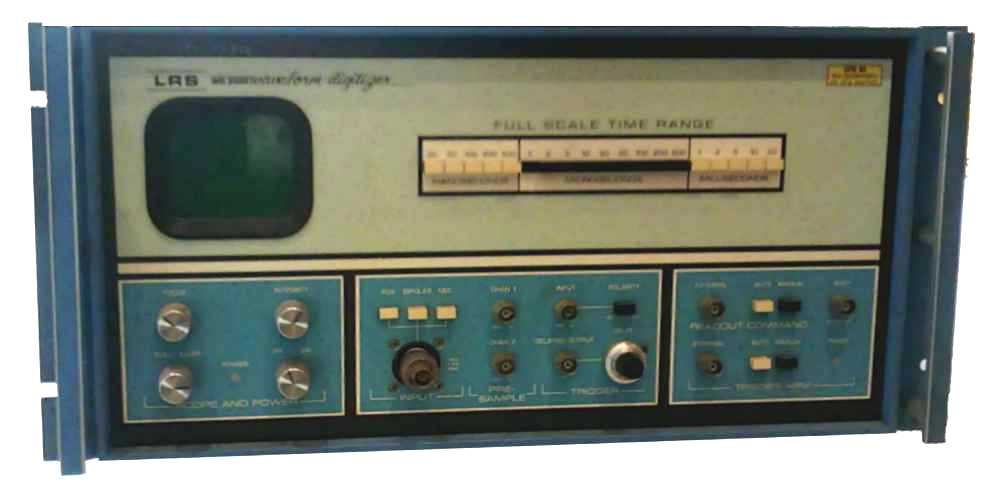 Oscilloscopes have been invented in the 1920s. Up to now this instrument encountered many innovations. In the beginning the most important manufacturers have been General Radio, DuMont, General Electric and Radio Corporation of America. Later Cossor and later Solartron dominated the market. Today the main players are Keysight, Tektronix and Teledyne LeCroy. Below we listed some important oscilloscope milestones.
Oscilloscopes have been invented in the 1920s. Up to now this instrument encountered many innovations. In the beginning the most important manufacturers have been General Radio, DuMont, General Electric and Radio Corporation of America. Later Cossor and later Solartron dominated the market. Today the main players are Keysight, Tektronix and Teledyne LeCroy. Below we listed some important oscilloscope milestones.

 How to resolve AdBlock issue?
How to resolve AdBlock issue?